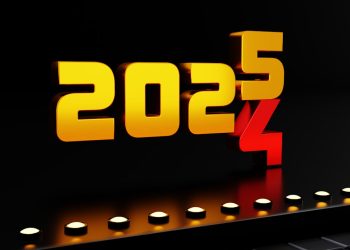No products in the cart.
Gen Z Faces AI Hiring Challenges in 2025
As automation reshapes the job market, Gen Z faces unprecedented challenges in securing employment. This piece explores the implications and potential strategies for young job seekers.
[City], [Country] — In 2025, a shadow looms over the job prospects of an entire generation. Gen Z, those born between 1997 and 2012, finds itself at the intersection of a rapidly evolving economy and the relentless march of automation. The once-promising job market has morphed into a maze of obstacles, where new graduates are met with a chilling reality: a “no hire, no fire” economy that offers little hope for fresh talent.
As new technologies advance, traditional entry-level roles are disappearing faster than ever. Companies, eager to cut costs and enhance efficiency, are employing artificial intelligence to handle tasks that once required human touch. The result? A generation of eager job seekers left on the sidelines, watching as automated systems take over functions from customer service to data entry.

The statistics are staggering. A recent report from the World Economic Forum predicts that by 2025, 85 million jobs may be displaced by automation, while only 97 million new roles will emerge, many requiring skills that young graduates do not possess. This leaves Gen Z in a precarious position, where the gap between education and employment continues to widen. The challenge is not merely finding a job but securing one that offers a sustainable career path.
Consider the story of 24-year-old Maya from San Francisco. After completing her degree in communications, she entered the job market with enthusiasm, only to be met with a barrage of rejection emails. “I thought my degree would open doors, but it feels like they’ve all been shut in my face,” she recalls. Maya is not alone; her experience echoes across the globe as countless graduates find themselves in a similar predicament, battling against an unyielding tide of automation.
Businesses are reluctant to expand their workforce amid uncertainty, leaving young professionals in a holding pattern.
While some companies have adopted a “no hire, no fire” strategy, which ostensibly protects current employees from layoffs, it has paradoxically frozen out new entrants. Businesses are reluctant to expand their workforce amid uncertainty, leaving young professionals in a holding pattern. The irony is palpable: while automation is designed to make processes more efficient, it is simultaneously stifling the very creativity and innovation that new hires can bring.
Yet, amidst the gloom, there are glimmers of hope. Organizations that recognize the importance of mentorship and upskilling are beginning to emerge. Companies like Accenture and Deloitte are investing heavily in training programs aimed at bridging the skills gap. These initiatives not only help new graduates but also create a more adaptable workforce capable of thriving alongside technology.
Moreover, the gig economy is offering alternative pathways for young professionals. Freelancing and side hustles have become viable options for those seeking flexibility and autonomy. Platforms like Upwork and Fiverr enable Gen Z to showcase their skills and connect with clients worldwide, often bypassing traditional hiring processes altogether. This shift signifies a broader transformation in how work is conceptualized, moving away from conventional 9-to-5 roles toward a more fluid understanding of employment.
However, the gig economy is not without its challenges. Job security is often elusive, and benefits are limited, leaving many to navigate a precarious financial landscape. As such, it becomes imperative for young professionals to develop a diverse skill set that transcends specific job descriptions. Adaptability, digital literacy, and emotional intelligence are becoming the currency of the future job market.
A critical aspect of this evolution lies in education reform. As the nature of work shifts, so too must the educational systems that prepare students for it. Universities and colleges are beginning to rethink curricula, integrating technology and real-world skills into their programs. Institutions that prioritize experiential learning, such as internships and co-op programs, will equip graduates with the hands-on experience necessary to thrive in an AI-driven economy.
As we look toward the future, it is essential to recognize that the landscape of employment is not set in stone. The challenges faced by Gen Z are significant, but they also present opportunities for innovation and resilience. By embracing change, investing in lifelong learning, and fostering a culture of adaptability, young professionals can carve out their own paths in a world that is constantly evolving.
As the nature of work shifts, so too must the educational systems that prepare students for it.
Ultimately, the key to navigating this new reality lies in proactive engagement. Gen Z must not only seek out opportunities but also advocate for systemic changes that support their aspirations. Whether through pushing for policy reforms that promote job creation or participating in conversations about the future of work, their voices can help shape a more inclusive and dynamic workforce.
The road ahead may be fraught with challenges, but with each obstacle comes the potential for growth. As automation continues to reshape the job market, Gen Z has the power to redefine what work looks like in the 21st century.











